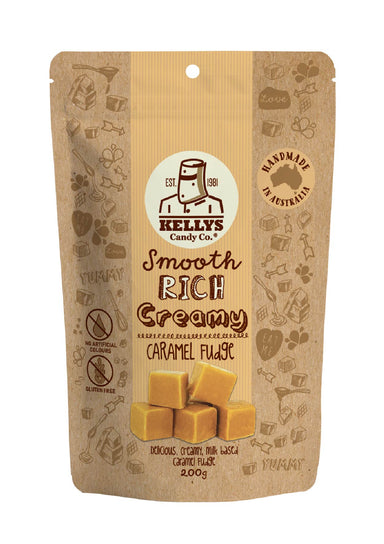The 15-Second Trick For I Luv Candi
The 15-Second Trick For I Luv Candi
Blog Article
The Only Guide to I Luv Candi
Table of ContentsThe Facts About I Luv Candi RevealedThe 9-Minute Rule for I Luv CandiI Luv Candi Fundamentals ExplainedThe smart Trick of I Luv Candi That Nobody is DiscussingAbout I Luv Candi
We have actually prepared a lot of company plans for this kind of project. Here are the common customer segments. Consumer Sector Summary Preferences Just How to Discover Them Children Youthful clients aged 4-12 Vibrant candies, gummy bears, lollipops Partner with local schools, host kid-friendly events Teenagers Adolescents aged 13-19 Sour candies, novelty items, trendy treats Engage on social media sites, collaborate with influencers Parents Grownups with young children Organic and much healthier alternatives, sentimental candies Offer family-friendly promotions, promote in parenting publications Trainees College and university students Energy-boosting candies, affordable snacks Partner with neighboring campuses, advertise during exam periods Present Customers People seeking presents Costs delicious chocolates, gift baskets Develop captivating screens, offer personalized gift alternatives In evaluating the financial characteristics within our candy shop, we've located that clients usually spend.Monitorings suggest that a typical client frequents the store. Particular periods, such as vacations and special celebrations, see a surge in repeat brows through, whereas, during off-season months, the regularity might decrease. da bomb australia. Computing the lifetime worth of an ordinary client at the sweet-shop, we estimate it to be
With these variables in consideration, we can deduce that the typical earnings per consumer, over the course of a year, hovers. The most rewarding consumers for a sweet shop are frequently households with young kids.
This group often tends to make frequent purchases, enhancing the shop's profits. To target and attract them, the sweet-shop can use colorful and playful advertising methods, such as vivid display screens, catchy promotions, and possibly even holding kid-friendly occasions or workshops. Producing an inviting and family-friendly ambience within the shop can additionally boost the general experience.
Excitement About I Luv Candi
You can also approximate your own income by applying various assumptions with our financial strategy for a sweet-shop. Ordinary month-to-month income: $2,000 This type of sweet-shop is typically a small, family-run business, probably understood to locals yet not drawing in large numbers of tourists or passersby. The shop may offer an option of typical candies and a couple of homemade treats.
The shop does not generally carry unusual or costly items, focusing rather on budget-friendly treats in order to maintain normal sales. Presuming a typical spending of $5 per client and around 400 consumers each month, the month-to-month earnings for this sweet-shop would certainly be around. Typical regular monthly income: $20,000 This sweet-shop take advantage of its calculated area in a hectic city area, drawing in a huge number of clients seeking wonderful extravagances as they go shopping.
Along with its varied sweet selection, this shop could likewise market related products like gift baskets, sweet arrangements, and novelty products, giving multiple profits streams - chocolate shop sunshine coast. The store's place needs a greater budget for rent and staffing however brings about higher sales volume. With an estimated typical investing of $10 per consumer and about 2,000 clients per month, this store might create
Some Known Details About I Luv Candi
Situated in a major city and tourist location, it's a big establishment, often spread out over several floors and possibly component of a national or international chain. The shop provides a tremendous range of candies, consisting of exclusive and limited-edition things, and product like branded clothing and accessories. It's not simply a store; it's a location.
The functional prices for this type of store are significant due to the area, size, team, and features used. Assuming an ordinary acquisition of $20 per customer and around 2,500 consumers per month, this flagship store can achieve.
Classification Examples of Expenditures Ordinary Month-to-month Price (Variety in $) Tips to Minimize Costs Rent and Utilities Store rental fee, power, water, gas $1,500 - $3,500 Take into consideration a smaller location, discuss rent, and use energy-efficient lights and devices. Supply Candy, snacks, packaging materials $2,000 - $5,000 Optimize supply administration to lower waste and track prominent products to prevent overstocking.
Marketing and Advertising Printed materials, online advertisements, promotions $500 - $1,500 Concentrate on economical digital advertising and make use of social media systems absolutely free promotion. da bomb australia. Insurance policy Organization liability insurance coverage $100 - $300 Shop around for competitive insurance coverage prices and take into consideration bundling plans. Equipment and Upkeep Sales register, show racks, fixings $200 - $600 Buy secondhand tools when possible and perform regular maintenance to extend devices life-span
The 30-Second Trick For I Luv Candi
Credit Rating Card Processing Fees Costs for refining card settlements $100 - $300 Work out lower processing costs with repayment processors or discover flat-rate choices. Miscellaneous Office materials, cleansing products $100 - $300 Buy wholesale and search for price cuts on products. A sweet-shop ends up being profitable when its complete income surpasses its overall set prices.

A huge, well-located candy store would undoubtedly have a higher breakeven point than a small store that doesn't require much income to cover their expenditures. Curious regarding the success of your sweet shop?
The Ultimate Guide To I Luv Candi

Last but not least, financial declines that lower customer investing can affect sweet-shop sales and success, making it crucial for sweet-shop to manage their expenses and adapt to altering market problems to stay lucrative. These risks are commonly included in the SWOT analysis for a sweet-shop. Gross margins and web margins are key indicators used to assess the profitability of a sweet-shop business.
Basically, it's the profit remaining after subtracting expenses directly pertaining to the candy inventory, such as acquisition expenses from suppliers, production prices (if the candies are homemade), and team incomes for those associated with production or sales. Net margin, alternatively, consider all the expenses the sweet-shop sustains, consisting of indirect expenses like management expenses, marketing, lease, and tax obligations.
Sweet stores typically have a typical gross margin.For instance, if your sweet shop gains $15,000 per month, your gross profit would be approximately 60% x $15,000 = $9,000. Take into consideration a candy store that offered 1,000 sweet bars, with each bar valued at $2, making the complete revenue $2,000.
Report this page